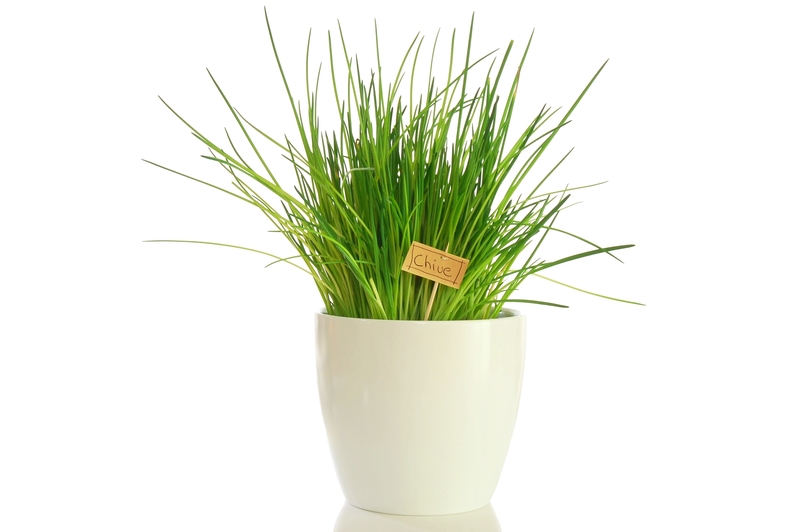Elevate Your Outdoor Space with Minimalist Zen Garden Design Techniques
Posted on 19/09/2025
Elevate Your Outdoor Space with Minimalist Zen Garden Design Techniques
Discover the art of transforming your backyard or patio into a peaceful retreat with minimalist Zen garden design. Whether you desire a meditative oasis or simply a harmonious place to unwind, harnessing Zen principles can bring balance, calm, and elegance to your outdoor space. In this comprehensive guide, you'll learn the core elements, design strategies, and essential tips to create a breathtaking minimalist Zen landscape right at home.
Understanding the Philosophy Behind Minimalist Zen Gardens
Minimalist Zen gardens--also known as Japanese rock gardens or karesansui--originate from ancient Buddhist traditions in Japan. These subtle gardens focus on simplicity, natural elements, and a deliberate use of space, cultivating a sense of tranquility and mindful presence. Minimalism ties closely to Zen notions of clarity and openness, removing excess and allowing natural beauty to shine through.
- Zen gardens prioritize simplicity, harmony, and asymmetry.
- They often use rocks, sand, gravel, moss, and water features instead of excessive plants or decorations.
- The garden acts as a metaphor for life, inviting meditation and contemplation.
- Minimalist garden design in this style cultivates a sense of openness, enabling you to connect with nature and find peace amid daily stresses.

Essential Elements of Minimalist Zen Garden Design
To elevate your outdoor space with Zen garden techniques, it's critical to select and arrange core elements thoughtfully. Each feature carries symbolic meaning and contributes to a cohesive, tranquil atmosphere. The following are the main components of a minimalist Zen landscape:
1. Rocks and Gravel
Rocks symbolize mountains or islands, serving as anchor points and focal features. Choose stones of varying sizes, shapes, and natural colors for authenticity. Gravel or sand represents water or the flow of life; its patterns--raked into ripples, waves, or straight lines--encourage meditative reflection.
2. Sparse Vegetation
Minimalist Zen gardens favor select plants--moss, bamboo, Japanese maple, or pine--arranged sparingly to reinforce simplicity. Evergreen shrubs provide year-round structure and subtle color without overwhelming the senses.
3. Water Features
If space and resources allow, a simple pond, stream, or bamboo fountain embodies the flow and purity of water, adding soothing sounds and movement to your outdoor sanctuary.
4. Pathways and Stepping Stones
Stone paths invite slow, mindful movement through the garden. Their irregular placement reflects natural, non-linear progress, while stepping stones guide visitors along peaceful journeys.
5. Minimal Architecture and Accessories
Keep structures understated--think low wooden benches, subtle lanterns, or a bamboo fence. Any seating or shelter should blend naturally into the scenery and provide places for quiet contemplation.
Key Minimalist Zen Garden Design Techniques
Adopting a minimalist approach to Zen garden design goes beyond the selection of materials--it's about intention, balance, and the gentle interaction between elements. Below are practical techniques for integrating Zen principles into your outdoor environment.
1. Embrace Negative Space
Empty space is as vital as occupied space in a Zen garden. Resist the urge to fill every corner. Instead, allow areas of open sand, gravel, or moss to create visual breathing room and offer the eye a place to rest. This minimalist landscaping principle amplifies the impact of each selected element.
2. Asymmetrical Balance
Perfect symmetry is avoided in Zen garden layouts. Instead, embrace a dynamic, "imperfect" balance by arranging stones, plants, and features in triads or irregular groupings. This echoes the randomness of nature and keeps your garden visually engaging yet serene.
3. Use Natural Materials
Choose materials that age gracefully--untreated wood, weathered stone, sand, and pebbles harmonize with their surroundings. Avoid flashy colors or manufactured items that disrupt the garden's naturalistic mood.
4. Limit Your Plant Palette
Opt for a restricted choice of plant species. This restraint underpins the minimalist approach and heightens the effect of subtle greenery and seasonal changes.
5. Frame Views
Incorporate fences, bamboo screens, or strategic planting to provide framed views--inviting glimpses and focal points rather than vast openness. This fosters privacy and a feeling of intimate enclosure.
6. Rhythm and Repetition
Repetition of stone types, raked patterns, or plant species helps unify the space and establish a calming rhythm--a core aspect of Japanese minimalist garden design.
Step-by-Step Guide: Designing Your Minimalist Zen Garden
Ready to start your transformation? Here's a practical process to turn your vision into reality:
- Define Your Purpose: Are you seeking a quiet meditation spot, a scenic accent, or an extended living space? Your intention will guide your design decisions.
- Assess the Site: Take note of sun exposure, views, slope, and existing natural features. Minimize disturbance to what's already beautiful or well-established.
- Draw the Layout: On paper or digitally, sketch the rough outline. Mark out locations for stones, sand/gravel beds, plants, and pathways. Focus on asymmetric groupings and generous areas of emptiness.
- Select Materials: Source local rocks, sand, gravel, wood, and plants native to your region when possible. This supports sustainability and ensures a natural feeling.
- Prepare the Ground: Remove weeds, level the surface (with gentle contouring), and lay breathable landscape fabric to curb future weed growth under gravel or sand.
- Install Hardscape Features: Set stones or boulders first (often in odd numbers). Add pathways, stepping stones, and edging before spreading gravel or sand.
- Plant Carefully: Insert moss, dwarf bamboo, ferns, or evergreen shrubs according to your plan--focusing on sparse, intentional placements.
- Rake Patterns: Use a wide-toothed rake to form lines, arcs, or swirls in the sand or gravel. Refresh patterns regularly for continued mindfulness and visual interest.
- Add Accessories Sparingly: Place a low bench, sculptural lantern, or minimalist water feature only if it amplifies the tranquility and aesthetic of your design.
Top Plant Choices for Minimalist Zen Gardens
Plant selection is a pivotal aspect of minimalist Zen garden design. The right choices elevate your garden's sense of calm, structure, and seasonal interest. Here are excellent options:
- Mosses (Hypnum, Dicranum): Lush, green carpets ideal for shade and moisture-retentive areas.
- Bamboo (Fargesia, Pleioblastus): Offers privacy, sound, and an unmistakably tranquil aesthetic.
- Japanese Maple (Acer palmatum): For delicate leaves and brilliant autumn color in small doses.
- Black Pine (Pinus thunbergii): A classic evergreen for structure and year-round greenery.
- Azaleas (Rhododendron spp.): Floriferous shrubs for subtle spring accents.
- Liriope: Hardy, grass-like groundcover to fill empty spots without excess fussiness.
Tips for Maintaining Your Minimalist Zen Landscape
One appeal of Japanese minimalist gardens is their low maintenance. However, regular care preserves their serene beauty and meditative order:
- Keep gravel or sand rake patterns crisp--refresh after rain or windy weather.
- Trim moss, bamboo, and shrubs to retain clean lines and prevent overgrowth.
- Remove leaves, debris, and weeds promptly from beds and water features.
- Periodically reposition rocks or stepping stones to prevent settling and keep the layout intentional.
Common Mistakes to Avoid with Minimalist Zen Garden Design
- Overcrowding the space with too many features or plants--remember, less is more.
- Choosing flamboyant colors or synthetic materials that disrupt a harmonious, natural appearance.
- Neglecting the importance of negative space--embrace open areas.
- Forgetting practical considerations like drainage, sun exposure, or ongoing maintenance.
Inspiring Ideas to Personalize Your Zen Retreat
While minimalist Zen gardens adhere to time-tested principles, there is still ample room for creative touches:
- Artful Stone Lanterns: Subtle lighting transforms the garden after dusk.
- Meditation Platforms: Small decks or benches encourage mindful sitting and reflection amid the landscape.
- Dry Stream Beds: Curving gravel lines mimic a river flowing peacefully through rocks and moss.
- Bonsai Displays: Showcase living art within a simple, tranquil context.
- Minimalist Fences or Gates: Bamboo, wood, or stone elements create layers of privacy and mystery.
Why Choose a Minimalist Zen Garden?
Minimalist Zen gardens offer a host of profound benefits for modern living:
- Psychological Calm: The deliberate design and simplicity foster relaxation and mental peace.
- Low Water and Maintenance Needs: Sparse planting and gravel beds require minimal upkeep.
- Seasonal Beauty: Subtle plantings showcase every season in a quiet, poetic manner.
- Environmental Harmony: Natural, local materials blend with the environment and attract native wildlife.
- Timeless Aesthetic: Zen gardens never go out of style--they radiate grace and elegance for generations.

Frequently Asked Questions About Minimalist Zen Gardens
How much space do I need for a minimalist Zen garden?
You can adapt Zen principles to any area--from a tiny balcony to a sprawling backyard. The key is restraint and intentionality in design.
Are Zen gardens suitable for all climates?
Yes! By choosing local materials and climate-appropriate plants, you can create a Zen-inspired garden in virtually any region.
Can I incorporate a Zen garden into an existing landscape?
Absolutely. Set aside a specific area for your minimalist Zen retreat or blend elements like gravel beds and sparse features into your broader garden for a cohesive hybrid.
What is the best time of year to install a Zen garden?
Spring and early fall are ideal planting seasons, especially for moss, shrubs, and trees. Hardscaping (stones, gravel, fencing) can be completed any time the ground isn't frozen.
Do I need professional help?
While landscape architects specializing in Zen gardens can offer valuable expertise, many home gardeners successfully build minimalist Zen spaces themselves by following core principles and guidelines.
Conclusion: Achieve Tranquility with Minimalist Zen Garden Techniques
Minimalist Zen gardens distill centuries of wisdom into an approachable, contemporary landscape style that celebrates peace, authenticity, and beauty in simplicity. By thoughtfully selecting natural materials, embracing negative space, and cultivating balance, you can elevate your outdoor space--transforming it into a serene, inspiring retreat. Begin your journey today, and experience the deep rewards of mindful garden living.

